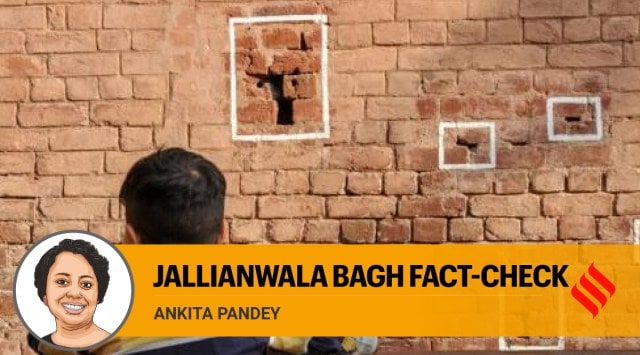
Every year in April, we remember the horrific Jallianwala Bagh massacre. This year, as the country considers the proposed Information Technology (Intermediary Guidelines and Digital Media Ethics Code) Amendment Rules, 2023, it is worth revisiting the story of two inquiries conducted over a hundred years ago in the aftermath of the massacre. The IT Ministry’s proposed rules will give the Press Information Bureau powers to remove any “fake or inaccurate information” about the central government from social media and digital news media. Now is an opportune moment to recall the fundamental principle the Jallianwala Bagh inquiries followed: No government must get a carte blanche to determine what is fake or inaccurate with respect to its own work.
The details of the massacre are well-known. On April 13, 1919, a big crowd assembled at Jallianwala Bagh in Amritsar, Punjab, to protest peacefully against the arrest of two prominent pro-independence leaders. General Reginald Dyer, the soon-to-be infamous British military officer, invaded the Bagh with his troops and ordered continuous firing on the unarmed crowd. A widespread national and international outrage compelled the Government of Punjab to create a ‘Disorders Inquiry Committee’, also known as the Hunter Commission. There were three Indians in this eight-member Commission; Chimanlal Setalvad, Jagat Narayan, and Sultan Ahmed Khan. Each of the eight members cross-examined the accused officers. The Indian members were unsparing, detailed, and rigorous in their cross-examination of Dyer. Eventually, they disagreed with the opinion of the five British members and submitted their minority report.
The Indian National Congress (INC) did not trust a British-instituted inquiry to indict the guilty. Disapproving the Hunter Commission’s direction, the INC’s Punjab sub-committee set up its own parallel inquiry. A major challenge for this inquiry team was the widespread fear among the people of Punjab of the possible consequences of cooperating with this anti-government initiative. Ruchi Ram Sahani’s memoirs detail the difficulty members of the inquiry faced. Madan Mohan Malaviya did all he could to convince reluctant locals to speak with him and to get access to simple facilities such as transport. C R Das and Motilal Nehru collected evidence to corroborate recorded testimonies.
M K Gandhi kept a supervisory watch to ensure that people cooperating with the inquiry were not harmed. Several stenographers refused to type out the testimonies, and finally, two were brought from Lahore. Ultimately over 600 people gave testimonies to the team. These included merchants who were beaten up and compelled to crawl, teachers who were arrested, lawyers who had protested wholesale arrests, doctors and surgeons who had helped those who were wounded, vegetable sellers, shopkeepers, and pensioners who had suffered.
The report released after this long, thorough inquiry was monumental. It provided the political context, verified and corroborated witness testimonies, and called out official lies. It was published in two volumes of over 500 pages each; Volume I consisted of the report and Volume II of evidence. Members of the inquiry team collected enough evidence to prove that, unlike official claims, there was no conspiracy to overthrow the Government of Punjab.
The report presented a detailed account of how the Defence of India Act was abused by the then lieutenant governor of Punjab, Michael O’ Dwyer’s administration. Most notably, the report contested the official death toll of the massacre. While the government estimate was 290 — which would be awful enough — the INC reported it to be at least a thousand people. The INC demanded the recall of Lord Chelmsford — the then Viceroy of British India — for “he had proved himself incapable of holding the high office to which he was appointed”. Several British newspapers reported the details of this inquiry. It was a severe blow to the legitimacy of colonial rule.
Fact-checking, fact-finding, exposing abuse of the law, and contesting official records, were vital tools of resistance in the nationalist movement. Exemplary patriots of this country have believed that the determination of facts cannot be left in the hands of the government alone. Are there enough avenues available to us today to scrutinise and probe government claims about its own work? A robust, diverse, and free information ecosystem — not just a free press — gives us a chance to know the truth of our circumstances, our country, and our governments. In proposing regulations for online communication and social media, we cannot forget that social media dramatically expands the possibility of people telling their truths. It has become a lifeline for civil society, journalists, and activists. If the leaders of the Jallianwala Bagh inquiry — Madan Mohan Malviya, Motilal Nehru, M K Gandhi, C R Das, Abbas Tyabji, M R Jayakar, and K Satnam — were alive today, they would condemn any unchecked executive control of the information ecosystem, as should we.
(The writer is a departmental lecturer in Modern South Asian Studies at the University of Oxford)